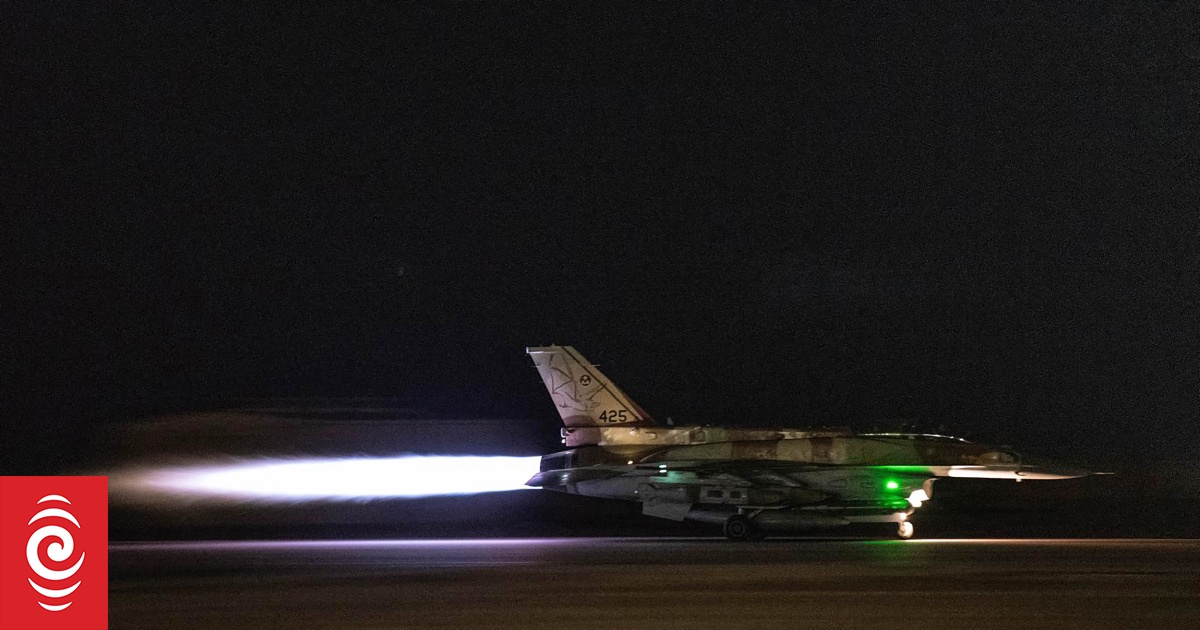By Esther Linder, ABC

Photo: AFP PHOTO / Israel Defense Forces (IDF)
As Hezbollah leader Hassan Nasrallah gave a televised address in Beirut on Thursday, a booming sound like thunder cracked several times through the Lebanese capital.
Nasrallah was speaking to condemn Israel for allegedly carrying out remotely detonated device attacks on Hezbollah’s members, killing 37 and injuring thousands including civilians.
But the noise heard by Beirut residents wasn’t thunder, and it has become terrifyingly familiar – a sonic boom caused by Israeli warplanes.
What is a sonic boom?
A sonic boom occurs when an aircraft travels equal to or faster than the speed of sound (approximately 343 metres per second, or 1 kilometre in 2.91 seconds).
It sounds like a huge crash of thunder or a cannon going off close by.
The Israeli air force has taken to carrying out sonic booms on a regular basis over Lebanon’s cities, particularly when Hezbollah leaders are giving speeches.
Sky News correspondent John Sparks was reporting live on Nasrallah’s speech on Thursday when the camera caught the sonic boom caused by an Israeli warplane.
“That was – we’ve just heard a very loud explosion or a blast. Not sure, I can’t see where that’s from,” Sparks said while on air.
In some countries including the US, sonic booms are prohibited without authorisation or special circumstances such as army training manoeuvres.
Perth residents may have heard one last month when the Singaporean air force was conducting training exercises 70 kilometres out to sea from the WA capital.
The booms can break windows and shake buildings, but the impact is far more psychological, say witnesses and experts.
‘Incredibly triggering’ for residents to hear
Australian Rohan Walsh moved to Beirut in 2022, and has experienced six sonic booms.
“Man, it’s the most terrifying sound because you think that it’s an explosion,” he told the ABC.
“First, the jets were flying so low over Beirut. You hear them flying and you think – already your mind goes to ‘they’re going to bomb something’.”
“And then you hear – it sounds like a massive explosion,” Walsh said, describing how a following ricochet sound is the only way to tell between a sonic boom and another type of explosion or bombing.
“Ever since the [sonic boom] I’ve been so jumpy. You hear the backfiring of a motorbike, the shooting in the distance – everything, everything makes you think – it’s a fear that you might be about to be harmed.”
Repeated blasts of war
Many residents of Lebanon have lived through at least one war.
Between 1975 and 1990, the country was wracked by a civil war where 150,000 people are estimated to have died.
In 1982, the Israeli military invaded Lebanon and occupied parts of Beirut for a year, with Hezbollah forming in response.
Israeli forces remained in the south of Lebanon for 22 years until 2000.
And in 2006, 1200 Lebanese and 158 Israelis were killed during a five-week war sparked by Hezbollah’s kidnapping of two Israeli soldiers.
War is not the only violence the people of Beirut have endured.
In August 2020, a warehouse filled with 3000 tonnes of ammonium nitrate caught fire and blew up in Beirut’s port.
The blast was felt outside of Lebanon, with “untold psychological harm” caused as over 200 people died and 7000 were injured, according to a Human Rights Watch report, such as PTSD, anxiety and other ongoing mental health issues.
Mr Walsh said for his Lebanese friends who lived through the 2020 blast or other wars, sonic booms were “incredibly triggering”.
“We preferred it when it was just nature that was trying to kill us, not these multi-layered stresses,” he said.
‘Psychological warfare’
The sonic booms and the blasting noise they create don’t appear to have any direct military use, Dr Marcus Hellyer, the head of research at Strategic Analysis Australia, said.
“It is more a form of intimidation or psychological warfare that a state can employ to apply pressure.
“Essentially it is sending the message that we can strike you whenever we want to,” Hellyer said, stressing that neither Lebanon nor Hezbollah have a sophisticated air defence system like Israel’s Iron Dome.
Hellyer said the purpose of the Israeli Air Force flying at such speeds and causing such distress was to make sure residents of Beirut knew they were there, as a direct reminder that Israel can “strike any target in Lebanon”.
“There’s no point sending a message if the recipients don’t see, or in this case, hear it,” he said.
Prohibition on ‘spreading terror’ in civilian populations
Dr Emily Crawford, a professor in international law at the University of Sydney, told the ABC there is no specific international law that prohibits the use of “techniques” like sonic booms.
However, there are laws banning the use of “acts or threats of violence where the primary purpose is to spread terror among the civilian population”, Crawford said.
The threshold for this is high, so while the use of snipers or indiscriminate bombing has previously met the standard, a handful of sonic booms alone may not reach it.
But given the recent attacks on Hezbollah using explosives planted in hand-held radio and pager devices and the number of civilians affected, a collective case could be made, Crawford said.
“There is a reasonable case to be made that [the detonated devices and the sonic booms] might collectively get to the level of causing terror in the civilian population – particularly if there is a consistent repetitive practice of overflight leading to sonic booms.”
– ABC

